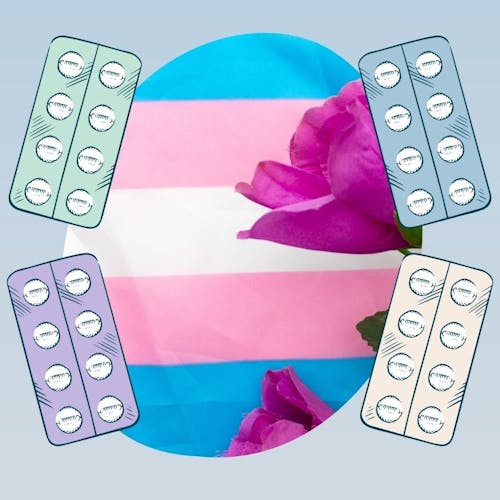This website uses cookies to enhance the user experience. By using Yoppie you are agreeing to our use of cookies.
A Guide To LGBTQIA+ Terminology & Pronouns
Written by Yoppie
22 Jun 2021
What do all the letters mean?
What about other terms?
What’s the difference when talking about gender vs sexuality?
Why are pronouns important?
How do I use pronouns?
How do I share my pronouns, and ask others for theirs?
What if I make a mistake?
Got questions about LGBTQIA terms you’ve come across, or how to share and ask for pronouns? Whether you identify as LGBTQIA or not, brushing up on your knowledge of terminology and pronouns is a small step that can make a big difference to those around you, making sure they feel heard and understood in daily life - something we all deserve.
Here’s our guide to LGBTQIA terminology and pronouns, correct as of Pride Month 2021. Let’s go…
What do all the letters mean?
Over the years you may have come across various iterations of the acronym, including LGBT, LGBTQ+, and later LGBTQIA. There are other letters sometimes included, but these are the most common. According to Outright International, LGBTQIA stands for:
Lesbian - Often refers to a woman who is attracted to other women
Gay - Often refers to a man who is attracted to other men
Bisexual - Often refers to someone who is attracted to more than one gender
Transgender - Often refers to someone whose gender identity/expression does not conform to the sex they were assigned at birth. Transgender people have different sexual orientations, with some identifying as straight, while others may identify as LGB
Queer and/or Questioning - Queer often refers to anyone who is not heterosexual and not cisgender. It’s used as somewhat of an umbrella term, and historically was used as a slur. More recently the term has been reclaimed by LGBTQIA communities, though some still find it offensive. Questioning refers to someone who is unsure of their sexual orientation or how they identify
Intersex - Often refers to people who naturally have biological traits which do not match what is typically identified as male or female, based on their X and Y chromosomes, ambiguous genitalia or internal sex organs. Being intersex is not linked to sexual orientation or gender identity
Asexual and/or Ally - Asexual often refers to people who do not experience (or experience low levels of) sexual desire. This can include those who are interested in having romantic relationships, and those who are not. Ally refers to people who identify as cisgender or heterosexual, and believe in equality for LGBTQIA people
What about other terms?
A number of other terms come up in modern life, and it’s always useful to know what they mean. Here are a few:
Cisgender means someone whose gender matches the sex they were assigned at birth.
Non-binary (sometimes Genderqueer) means a person whose gender identity is not exclusively masculine or feminine. They can be both or neither. Some view the word queer as offensive, so if you are unsure, non-binary is typically the more accepted term.
Genderfluid refers to a person whose gender identity tends to change over time and at different times.
What’s the difference when talking about gender vs sexuality?
Put simply, our sex, which can be taken in a physical sense, is different from our gender, which can be taken in a psychological and social sense. So regardless of the sex you were assigned at birth, you may identify as being male or female, or neither. If you identify as neither, you may be transgender, or gender non-binary.
Sexuality on the other hand, often describes the sexual feelings we experience towards others. For example, you may be straight/heterosexual, gay, lesbian, bisexual or asexual.
Remember, for both gender and sexuality, there is no reason you have to choose a label for yourself. You can explore your feelings, change your mind, settle on a label, or never do. It’s all OK.
Why are pronouns important?
Pronouns are an important part of who we are, and we share them in order to avoid assuming based on appearance. By using someone’s correct pronouns, we are affirming their identity.
The most common pronouns are ‘he’ and ‘she’, which refer to a person’s gender, but for some transgender, non-binary or queer people, these pronouns may not apply, so using them can be uncomfortable, and potentially cause a lot of stress and anxiety. One study actually showed that in the case of transgender youth, using the correct pronouns and names can reduce depression and suicide risk, so pronouns are more important than ever.
How do I use pronouns?
Just as there are he/she pronouns, some people use the pronouns below:
They/them/theirs - Often used in English as a plural pronoun (more than one person), ‘they’ is also used by people who don’t identify with he/she pronouns or who identify as non-binary. An example of this would be, “Jane just nipped out for coffee but they’ll be back soon.”
Mixed pronouns - Some gender non-conforming people use a mix of pronouns, displayed as, for example, he/them, or they/her. In many cases, mixed pronouns signify the person uses both pronouns interchangeably, but potentially prefers the first pronoun mentioned. It’s best to ask what pronouns people use though, as they have unique meanings for each person.
New pronouns and names - Although rare, some people use newer pronouns like Ze (or Zie), Zee, or Xe, while some don’t use any pronouns, and will ask to be referred to by their name alone.
How do I share my pronouns, and ask others for theirs?
Sharing pronouns is becoming common practice in many social situations. While you don’t have to do this, sharing your pronouns opens the floor for everyone to make clear how they would like to be addressed. Instead of only doing this in situations where you may be singling out specific people or communities, you can make it a habit of introducing yourself and your pronouns everywhere; “Hi, I’m Jane and my pronouns are she/her.”
Asking someone for their pronouns may feel odd in the beginning, as you don’t want to offend or pressure anyone into sharing something they’re not comfortable with, but you can do this in a friendly and respectful way. Some examples are simply “May I ask what pronouns you use?”, or “Are you comfortable sharing your pronouns?” Don’t say ‘preferred pronouns’ as this implies they are optional, which they shouldn't be.
And remember, some people use certain pronouns in different contexts. An example of this might be a transgender person feeling comfortable using certain pronouns with friends, but using a different set of pronouns at home with family. Never assume, even if you think you know what pronouns they will use - it’s always best to ask.
What if I make a mistake?
No sweat. Mistakes are bound to be made, but it’s about reacting to those mistakes with care and compassion. If you use the wrong name or pronoun, simply apologise, follow up with the pronoun you meant to use, and move on without drawing too much attention. Don’t try to apologise profusely to acknowledge how bad you feel about the mistake, as this can make everyone (especially the person whose name or pronoun was misused) feel more uncomfortable. Apologise, correct and move on with the conversation without making a fuss.
Do you have questions about LGBTQIA terminology or pronouns? We’re always learning ourselves, but we will do our best to get you the answers you’re looking for! You can ask any questions you have over in our private Facebook group, or drop us a note on Insta @itsyoppie. Don't forget that our personalised period box can get organic tampons, pads, liners (and more!) delivered easily and regularly through your letterbox, which is one less thing to worry about if you're someone who menstruates - whatever your gender.
Section jump
Back to top
Subscribe To Our Newsletter
YOPPIE





© 2025 Yoppie is a registered trademark of Phlo Technologies Ltd.
Yoppie's supplements are not a substitute for a varied diet and healthy lifestyle and are not intended to diagnose, treat, or cure any disease. If you are pregnant, breastfeeding, have a medical condition or are under medical supervision, please consult with your doctor before taking any of our products.






